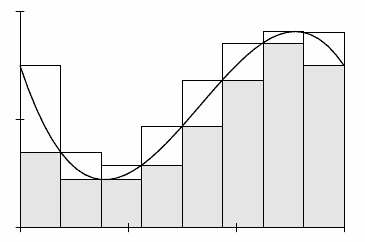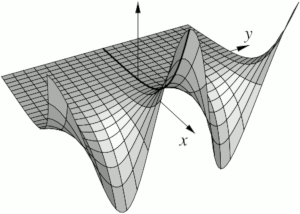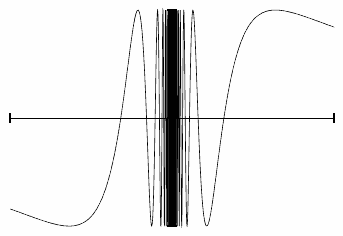Introduction To Undergraduate Mathematics Pdf
Basic Analysis: Introduction to Real Analysis
By: Jiří Lebl
(website #1 https://www.jirka.org/ (personal), website #2 https://math.okstate.edu/people/lebl/ (work: OSU), email: )
Jump to:
[Download the book (volume I) as PDF] [volume II as PDF]
[Buy paperback (volume I) on Amazon] [volume II on Amazon] [Web version] [Search]
This free online textbook (OER more formally) is a course in undergraduate real analysis (somewhere it is called "advanced calculus"). The book is meant both for a basic course for students who do not necessarily wish to go to graduate school, but also as a more advanced course that also covers topics such as metric spaces and should prepare students for graduate study. A prerequisite for the course is a basic proof course.  An advanced course could be two semesters long with some of the second-semester topics such as multivariable differential calculus, path integrals, and the multivariable integral using the second volume. There are more topics than can be covered in two semesters, and it can also be reading for beginning graduate students to refresh their analysis or fill in some of the holes.
An advanced course could be two semesters long with some of the second-semester topics such as multivariable differential calculus, path integrals, and the multivariable integral using the second volume. There are more topics than can be covered in two semesters, and it can also be reading for beginning graduate students to refresh their analysis or fill in some of the holes.
This book started its life as my lecture notes for Math 444 at the University of Illinois at Urbana-Champaign (UIUC) in the fall semester of 2009. It was later enhanced to teach the Math 521/522 sequence at University of Wisconsin-Madison (UW-Madison) and the Math 4143/4153 sequence at Oklahoma State University (OSU).
The book (volume I) starts with analysis on the real line, going through sequences, series, and then into continuity, the derivative, and the Riemann integral using the Darboux approach. There are plenty of available detours along the way, or we can power through towards the metric spaces in chapter 7. The philosophy is that metric spaces are absorbed much better by the students after they have gotten comfortable with basic analysis techniques in the very concrete setting of the real line. As a bonus, the book can be used both by a slower-paced, less abstract course, and a faster-paced more abstract course for future graduate students. The slower course never reaches metric spaces. A nice capstone theorem for such a course is the Picard theorem on existence and uniqueness of ordinary differential equations, a proof which brings together everything one has learned in the course. A faster-paced course would generally reach metric spaces, and as a reward such students can see a streamlined (but more abstract) proof of Picard.
Volume II continues into multivariable analysis. Starting with differential calculus, including inverse and implicit function theorems, continuing with differentiation under the integral and path integrals, which are often not covered in a course like this, and multivariable Riemann integral. Finally, there is also a chapter on power series, Arzelà-Ascoli, Stone-Weierstrass, and Fourier series. Together the two volumes provide enough material for several different types of year-long sequences. A student who absorbs the first volume and the first three chapters of volume II should be more than prepared for graduate real and complex analysis courses.
 I have tried (especially in recent editions) to add many diagrams and graphs to visually illustrate the proofs and make them more accessible. Usually, these are precise and more in-depth versions of the drawings I attempt on the board in class. Together, the two volumes have over a hundred figures.
I have tried (especially in recent editions) to add many diagrams and graphs to visually illustrate the proofs and make them more accessible. Usually, these are precise and more in-depth versions of the drawings I attempt on the board in class. Together, the two volumes have over a hundred figures.
The aim is to provide a low cost, redistributable, not overly long, high-quality textbook that students will actually keep rather than selling back after the semester is over. Even if the students throw it out, they can always look it up on the net again. You are free to have a local bookstore or copy store make and sell copies for your students. See below about the license.
One reason for making the book freely available is to allow modification and customization for a specific purpose if necessary (as the University of Pittsburgh has done for example). If you do modify this book, make sure to mark them prominently as such to avoid confusion. This aspect is also important for the longevity of the book. The book can be updated and modified even if I happen to drop off the face of the earth. You do not have to depend on any publisher being interested as with traditional textbooks.
Furthermore, errata are fixed promptly, meaning that if you teach the same class next term, all errata that are spotted are most likely already fixed. No need to wait several years for a new edition. Every once in a while I make some major addition and a new major version (edition), and then in between as errata are fixed I make minor version updates (like a corrected printing) usually once or twice a year, depending on the errata discovered. Exercise, chapter, and section numbers are preserved as much as humanly possible. What's added is added at the end with new numbers, so the book is generally compatible even if students (or the instructor) have an older printed copy. The minor updates are totally interchangeable and have very minimal changes, essentially nothing new.
MAA published a review of the book (they looked at the December 2012 edition of Volume I, there was only the first volume then). 
Table of contents:
Introduction
1. Real Numbers
2. Sequences and Series
3. Continuous Functions
4. The Derivative
5. The Riemann Integral
6. Sequences of Functions
7. Metric Spaces
Volume II:
8. Several Variables and Partial Derivatives
9. One Dimensional Integrals in Several Variables
10. Multivariable Integral
11. Functions as Limits
There are 531 exercises and 65 figures in Volume I (version 5.5, that is, Nov 9th 2021 edition).
There are 263 exercises and 43 figures in Volume II (version 2.5, that is, Nov 9th 2021 edition).
Please let me know at if you find any typos or have corrections, extra exercises or material, or any other comments.
There is no solutions manual for the exercises. This situation is intentional. There is an unfortunately large number of problems with solutions out there already. Part of learning how to do proofs is to learn how to recognize your proof is correct. Looking at someone else's proof is a far less effective way of checking your proof than actually checking your proof. It is like going the gym and watching other people work out. The exercises in the book are meant to be a gym for the mind. If you are unsure about the correctness of a solution, then you do not yet have a solution. Furthermore, the best solution for the student is the one that the student comes up with on their own, not necessarily the one that the professor or the book author comes up with.
Adoption:
Do let me know () if you use the book for teaching a course! The book was used, or is being used, as the primary textbook at (other than my courses at UIUC, UCSD, UW-Madison, and OSU) University of California at Berkeley, University of Pittsburgh, Vancouver Island University, Western Illinois University, Medgar Evers College, San Diego State University, University of Toledo, Oregon Institute of Technology, Iowa State University, California State University Dominguez Hills, St. John's University of Tanzania, Mary Baldwin College, Ateneo De Manila University, University of New Brunswick Saint John, and many others. See below for a more complete list.
The book has been selected as an Approved Textbook in the American Institute of Mathematics Open Textbook Initiative.
See a list of classroom adoptions for more details.
Download:
Download the volume I of the book as PDF
(Version 5.5, November 9th, 2021, 282 pages, 1.8 MB download)
Download the volume II of the book as PDF
(Version 2.5, November 9th, 2021, 195 pages, 1.4 MB download)
Check for any errata (volume I) (volume II) in the current version.
Look at the change log (volume I) (volume II) to see what changed in the newest version.
I started numbering things with version numbers starting at 4.0 for volume I, and version 1.0 for volume II. The first number is the major number and it really means "edition" and will be raised when substantial changes are made. The second number is raised for corrections only.
Buy paperback:
I get a bit of money when you buy these (depending on where exactly they are bought). Used to be enough to buy me a coffee, but inflation is taking its toll, so by buying a copy you will support this project. You will also save your toner cartridge.
Lulu always has the most up to date version than amazon, the difference is usually in terms of days or weeks. The paperback copy is on Crown Quatro size (7.44x9.68 inch), and the two versions of it (amazon and lulu) are essentially identical except for cover art (there are those who like the blue). I tested both and they both print quite well, so the quality is approximately the same, and I have seen some of them take quite a bit of beating by students.
Lulu also allows me to make a larger (US letter size) coil bound version which I prefer to get when teaching, as it can easily be opened and kept on a certain page. It may be easier to read, and take notes in as it has larger font and wider margins, though a little less portable. It's only a few dollars more.
Volume I:

Buy the smaller paperback copy at lulu.com for $13.94.
Or buy the larger coil-bound copy at lulu.com for $17.94.
This copy is the version 5.5 (November 9th, 2021) revision of volume I.
No ISBN for the lulu version.

Buy the smaller paperback copy on Amazon for $13.94.
This copy is the version 5.5 (November 9th, 2021) revision of volume I.
ISBN-13: 978-1718862401
ISBN-10: 1718862407
Volume II:

Buy the smaller paperback copy at lulu.com for $11.16.
Or buy the larger coil-bound copy at lulu.com for $15.16.
This copy is the version 2.5 (November 9th, 2021) revision of volume II.
No ISBN for the lulu version.

Buy the smaller paperback copy on Amazon for $11.16.
This copy is the version 2.5 (November 9th, 2021) revision of volume II.
ISBN-13: 978-1718865488
ISBN-10: 1718865481
Web version:
Browse the book in a web version of both volumes put together. The PDF version is the authoritative copy, and will print far better.
Search:
Search the web version (Google puts in a bunch of ads at the top of every search, unfortunately, can't get rid of that):
Instructor resources:
Online homework (WeBWorK):
I am putting together a set of problems for the first volume of the book. These are supposed to be companion problems to actual written homework, there are a lot of True/False problems and ordering statements into a proof, etc. They are not meant to replace written homeworki, they give students a bit more immediate feedback and some extra practice. Currently they are still work in progress, the non-optional sections in chapters 1-5 in Volume I are well covered and mostly tested by my students. I tried to have something like 6 WeBWorK questions every week. If you want to try them, email me I'll send you the current working set. In a few weeks, I will put a .tar.gz file here to download, but currently things might still be changing too much.
Source:
The source is hosted on GitHub: https://github.com/jirilebl/ra (both volumes).
You can get an archive of the source of the released version on github, look under https://github.com/jirilebl/ra/releases, though if you plan to work with it, maybe best to look at just the latest working version as that might have errata fixes or new additions. On the other hand, this might be a work in progress. Just ask me if unsure.
Volume I is realanal.tex and volume II is realanal2.tex (those are the "driver files" text is in separate files for each chapter). I compile the pdf with pdflatex. You need to compile the first volume first before the second volume. You might need to run makeindex (for the index) and makeglossary (for the list of notations) as well, though theoretically it should now be handled automatically. There are scripts publish.sh and publish2.sh, that run everything an obnoxious number of times to make sure it all works.
During the writing of this book, the author was in part supported by NSF grant DMS-0900885 and DMS-1362337.
License:
![]()
![]() This work is dual licensed under a Creative Commons Attribution-Noncommercial-Share Alike 4.0 License and Creative Commons Attribution-Share Alike 4.0 License. You can use, print, copy, and share this book as much as you want. You can base your own book/notes on these and reuse parts if you keep the license the same (that is, as long as you use at least one of the two licenses).
This work is dual licensed under a Creative Commons Attribution-Noncommercial-Share Alike 4.0 License and Creative Commons Attribution-Share Alike 4.0 License. You can use, print, copy, and share this book as much as you want. You can base your own book/notes on these and reuse parts if you keep the license the same (that is, as long as you use at least one of the two licenses).
Useful links:
- Notes on Diffy Qs: Differential Equations for Engineers
Another free undergraduate textbook. This one is a bit more basic, it is an application-oriented introduction to differential equations (no proofs there). - Guide to Cultivating Complex Analysis: Working the Complex Field
A graduate complex analysis course for incoming graduate students. After completing this real analysis course, the student should be ready for this complex analysis course. Again, a free textbook. - Wikipedia: Mathematical Analysis
- Introduction to Real Analysis by William Trench
- List of approved free textbooks from the American Institute of Mathematics
- Online Mathematics Textbooks
- Free Online Textbooks, Lecture Notes, Tutorials, and Videos on Mathematics
- Math Books
- OnlineCourses.com, a directory of online courses
Further reading:
- Robert G. Bartle, Donald R. Sherbert, Introduction to real analysis, 3rd ed., John Wiley & Sons Inc., 2000.
- John P. D'Angelo, Douglas B. West, Mathematical Thinking: Problem-Solving and Proofs, 2nd ed., Prentice Hall, 1999.
- Joseph E. Fields, A Gentle Introduction to the Art of Mathematics, http://giam.southernct.edu/GIAM/.
- Richard Hammack, Book of Proof, http://www.people.vcu.edu/~rhammack/BookOfProof/.
- Maxwell Rosenlicht,
Introduction to analysis, Reprint of the 1968 edition, Dover Publications Inc., 1986. ISBN:0-486-65038-3 - Walter Rudin, Principles of mathematical analysis, 3rd ed., McGraw-Hill Book Co., 1976.
- William F. Trench, Introduction to real analysis, Pearson Education, 2003, http://ramanujan.math.trinity.edu/wtrench/texts/TRENCH_REAL_ANALYSIS.PDF.


Introduction To Undergraduate Mathematics Pdf
Source: https://www.jirka.org/ra/
Posted by: fischerbessed1987.blogspot.com

0 Response to "Introduction To Undergraduate Mathematics Pdf"
Post a Comment